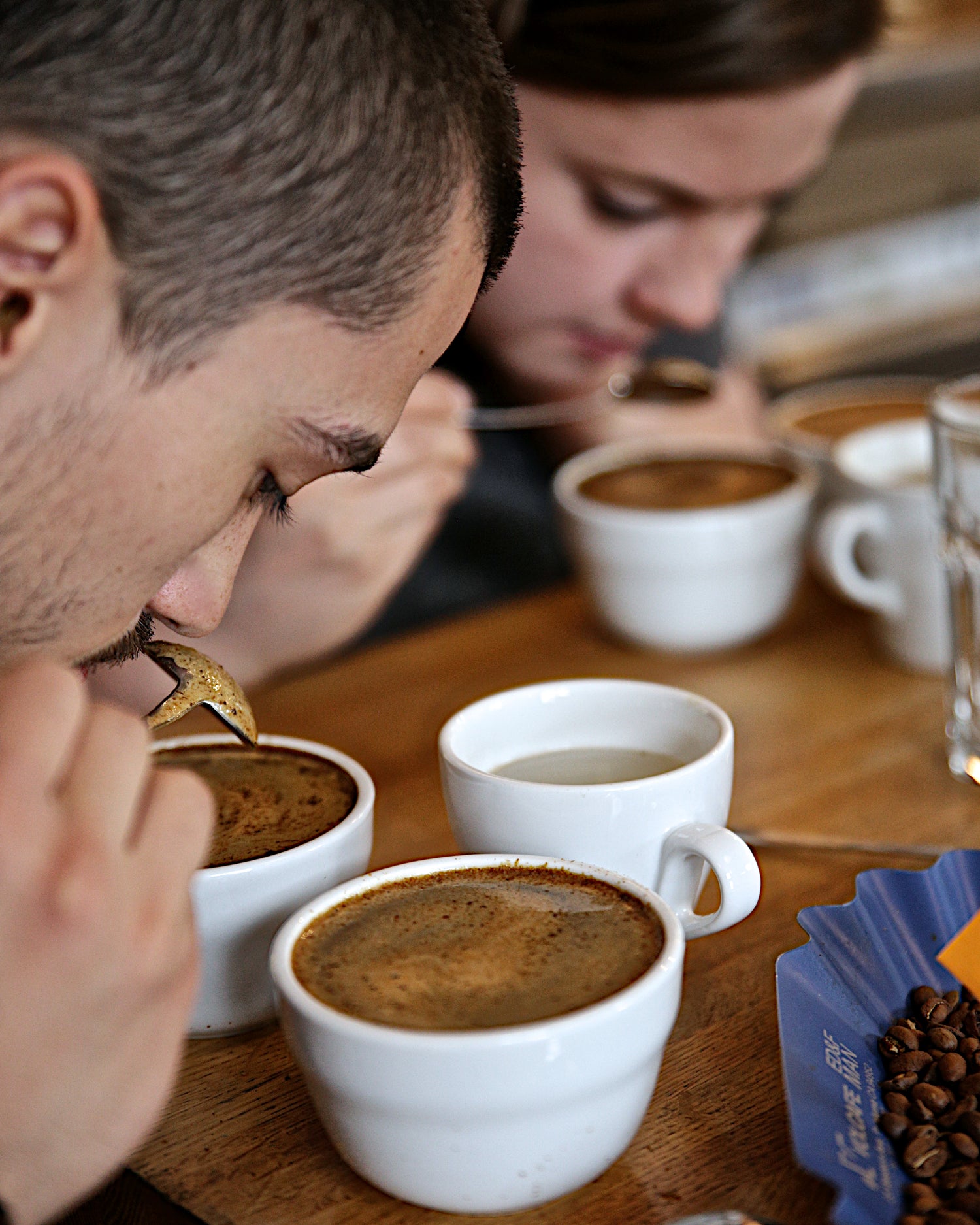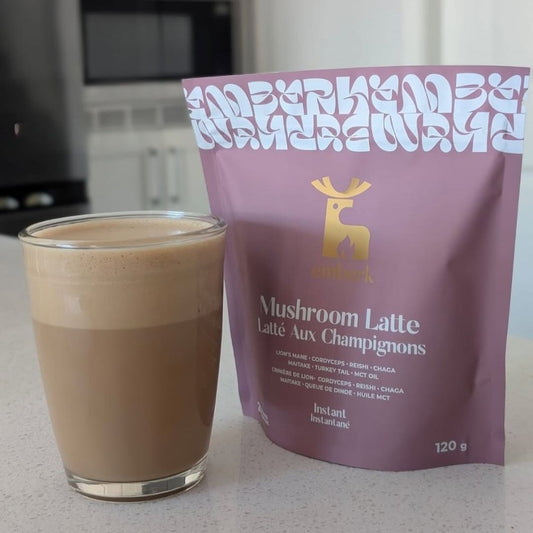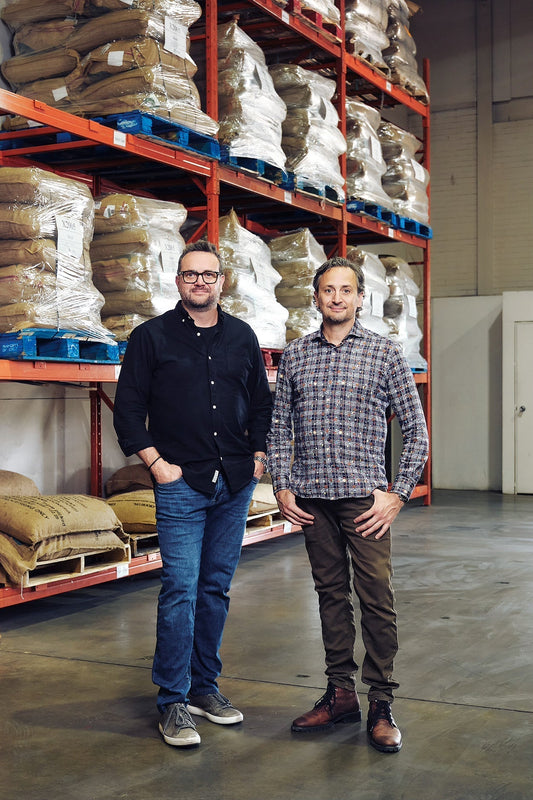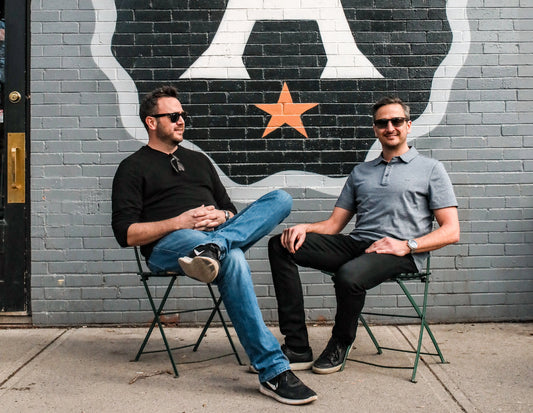8 Steps to Coffee Cupping | Beginners Guide on Ensuring Quality.
Discover the art of coffee cupping with our step-by-step guide to tasting and evaluating coffee like a pro, ensuring the best quality in every cup.

Coffee cupping is an essential practice for roasters and coffee enthusiasts alike. Aimed at meticulously evaluating the aroma and flavor profile of coffee beans. By following a standardized process, we can assure the highest quality in our coffee offerings. Below, we've expanded the 8 steps involved in coffee cupping to give you a deeper understanding of what it takes to discern the subtle nuances that distinguish an exceptional coffee.

Step 1: Weighing and Grinding Coffee Samples
- Objective: To prepare your coffee samples accurately for cupping.
- Detail: Use a precision scale to measure 8.25 grams of coffee per 150 ml of water. The grind size should be similar to sea salt, to ensure optimal extraction during infusion.
Step 2: Evaluating Dry Fragrance
- Objective: To assess the aroma of the coffee grounds before brewing.
- Detail: Within 15 minutes of grinding, take a moment to deeply inhale the aroma of the dry grounds. Note any distinct scents or qualities. This first impression is crucial for understanding the coffee's potential flavor profile.

Step 3: Infusing Dry Grounds
- Objective: To start the extraction process.
- Detail: Pour hot water at 200° F (93° C) to fill the cup to the brim, ensuring all grounds are saturated. Avoid disturbing the crust that forms on top, as this is part of the extraction process.
Step 4: Breaking the Crust
- Objective: To release the coffee's full aroma.
- Detail: After waiting for 4 minutes, gently stir the crust three times and inhale the aroma from the back of the spoon. This step is vital for assessing the coffee's aromatic profile post-infusion.

Step 5: Evaluating Wet Aroma
- Objective: To document the aroma after infusion.
- Detail: Using an SCAA (Specialty Coffee Association of America) scoring sheet, note the differences in aroma between the dry and wet stages. This comparison provides insight into how the coffee's characteristics transform upon brewing.
Step 6: Clearing the Coffee Grinds
- Objective: To prepare for tasting.
- Detail: Gently remove any floating grounds from the surface of the coffee. This ensures a clear tasting experience, free from any interference from residual grounds.

Step 7: Tasting and Scoring
- Objective: To evaluate the coffee's flavor profile.
- Detail:
- Tasting Technique: Slurp the coffee vigorously to aerate it, spreading it across your palate.
- Flavor Assessment: Note the initial flavors, aftertaste, acidity, body, and balance.
- Continued Evaluation: As the coffee cools, continue to assess its acidity, body, balance, sweetness, uniformity, and cleanliness. Each of these attributes contributes to the overall score and perception of the coffee.
Step 8: Final Evaluation
- Objective: To conclude the cupping session with a comprehensive score.
- Detail: Tally up your scores on the evaluation sheet to determine the coffee's overall quality. This final score helps in making informed decisions about coffee selection for your shop or personal enjoyment.




